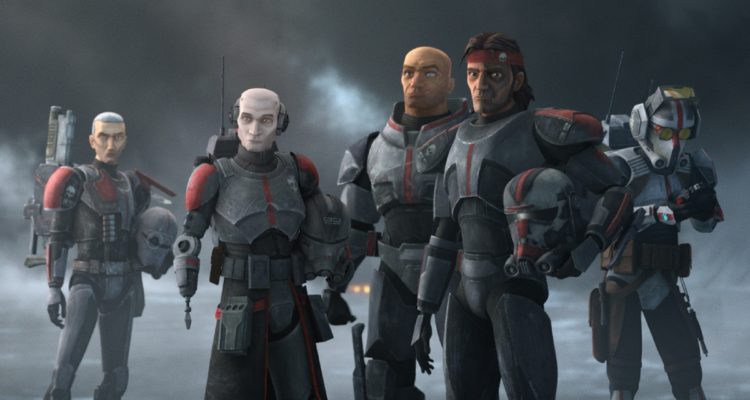After having spent six seasons knowing several of the clones that make up the Grand Army of the Republic, Season 7 of “Star Wars: The Clone Wars” introduced us to The Bad Batch, or Clone Force 99, a squad of clones with genetic malfunctions that give them enhanced abilities and personalities taken straight out of a 1980s action movie. Where their initial introduction felt a bit out of place in the aforementioned animated series, the squad’s first solo adventure in the aptly titled “Star Wars: The Bad Batch” is a lot more justified, as it adds a new perspective and time period to the larger story of the galaxy far, far away.
Arguably the best part of the premiere episode, which runs at an extended 72 minutes (even if it very much feels like three episodes stitched together), takes us back to the moments immediately before the devastating Order 66. We meet Caleb Dume (Freddie Prinze Jr.) the boy who one day would become Kanan Jarrus from “Star Wars: Rebels,” but sounds like a 40-year-old man in the body of a teenager. The scene serves as a re-introduction to the titular Bad Batch and their unique skills and personalities, as we see them shoot their way through an armada of droids without backup in a visually stunning sequence that shows how far the franchise has come, animation-wise.
Similar to something like “The Mandalorian,” which takes place during what’s supposed to be peace-time, but the audience knows is just the pre-able to the rise of the First Order, “The Bad Batch” is all about the transition between the Republic to the Galactic Empire. The first episode even recreated the speech given by Palpatine as he assumes the role of Emperor of the First Galactic Empire from “Revenge of the Sith,” and even if we are shown hundreds of thousands of clones in the audience initially cheer at the news of the war finally coming to an end, both the hauntingly effective score by Kevin Kiner presents a different story.
At its best, “The Bad Batch” serves as a bridge between two eras of “Star Wars,” as it presents the previously-unseen period when the Empire was just getting started, and most people still thought it was perfectly normal for a guy to suddenly declare himself Emperor and order the genocide of the entire Jedi Order. It’s small details like changing the name of the currency to Imperial credits, or the implementation of chain codes as a form of identification across the galaxy that helps paint the picture of a changing galaxy as it goes deeper into authoritarianism. That being said, when “The Bad Batch” dives deeper into the idea of clones, the series offers something unique to the franchise.
We’ve already seen stories of clones questioning their existence, and their purpose as war machines, but “The Bad Batch” goes further by presenting those questions just as the clones start facing an existential crisis. What are clones bred specifically for war to do now that the war is over? What will happen to them now that the Empire is moving towards conscription? The first episode doesn’t offer many answers but hints at a more complex exploration of these themes as the series progresses.
At this point, it may feel like a broken record to sing the praises of voice actor Dee Bradley Baker, but more so than ever before, “The Bad Batch” feels like a showcase of his acting abilities, given that he voices 90% of the characters in the show. You’d be forgiven for thinking that another actor secretly came in and recorded lines for at least some of the clones, given how distinct they sound, yet Baker still makes sure the clones feel like they all come from the same progenitor in subtle but noticeable ways like their speech pattern and the tempo in their voices.
But of course, Clone Force 99 is not alone, as we meet an enigmatic new kid named Omega, a medical assistant on Kamino with a mysterious past. Though the show may end up avoiding that pitfall, it’s hard not to take this character as the franchise forcing yet another unnecessary mystery box like Baby Yoda or Rey. There are enough enigmatic lines dropped throughout that hint at a larger purpose and backstory that’s seems meant to fabricate fan speculation, rather than serve the story of the show.
It’s too early to say whether we really needed to see the immediate aftermath of the end of the Clone Wars, and whether “The Bad Batch” is the right show to tell that story, but things look promising after the first episode. Clone Force 99 is made up of misfits and rule-breakers, so they’re already tailor-made to be “Star Wars” protagonists, and their role as outsiders even within the larger clone army makes them the perfect audience surrogate at a fascinating transition period in the larger “Star Wars” universe where the good guys have died or disappeared, and no one has noticed that the bad guys are in charge. [B]
The first episode of “Star Wars: The Bad Batch” is available now on Disney+.

